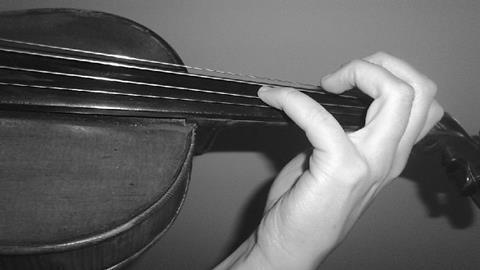Tips from The Strad’s archive on avoiding a weak, collapsing left-hand little finger

Explore more Technique like this in The Strad Playing Hub
The following quotes from our archive were originally published in December 2016.
Great violinists often avoid using the fourth finger if they get a better effect, or the right effect, more easily by using the third. It is the music that matters, not a display of one fingering over another.Use the fourth finger wherever it feels comfortable and secure; use the third if it offers more, as long as using it does not cause bad fingerings or intonation problems.
Before doing any exercises, the first step is to see the fourth finger in your mind’s eye as being strong. If it feels tight or weak, or if you cannot get the vibrato you want, picture the finger how you would like it to be.
Simon Fischer, The Strad, October 2010
With the left pinkie, I advocate vibrating with flatter fingers which keeps the little finger at a good angle and produces a fatter tone. As students grow older, the fingers become stronger and the ‘caving in’ issue diminishes.
Mimi Zweig, The Strad, January 2011
What is known as the ball of the little finger is situated between the knuckle joint of that finger and the wrist. The building up of the muscles around this portion of the hand must be done slowly and steadily. Any attempt at rushing matters will only cause discomfort, for if the muscles are severely strained, somewhat suddenly, cramp is sure to result. The tendons of course are very important factors in the gaining of strength and elasticity, but the student should never forget that the ball of the thumb and the ball of the little finger are the main essentials for strengthening the left hand.
To acquire strength of fingering, play slowly, raise each individual finger with a spring-like motion, and let it fall like a hammer. If this exercise is practised conscientiously it will produce wonderful results, for the manner of straightening the finger firmly and quickly after each note, produces, in course of time, that power and elasticity of muscle which are essential. Other splendid exercises are what may be termed silent exercises, ie, play the passages with the fingers only, and hear the notes by percussion.
James Winram, The Strad, July 1913
Read: Technique: Left-hand calisthenics
Read: Dealing with Dystonia
Read: Varying my warm-up routine is essential for performing success, says violinist Natalia Lomeiko
Read more Technique like this in The Strad Playing Hub
A surprisingly large number of children have extremely weak and collapsing fingers, but with regular exercises the weak little finger will develop strength, flexibility, mobility and elasticity.
Introduce the stopping motion of the left hand with left-hand pizzicato. The child should pluck the basic rhythms on open strings with all fingers, starting with the pinkie, in third or fourth position. Gradually bring the hand down to first position.
Develop the left-hand fingers’ plucking movement into a string- touching movement and play natural harmonics with the fourth finger. Start with the octave natural harmonics then introduce natural harmonics in first position, making sure the finger is curved. Help the string-touching movement of the little finger with a slight inward adjustment of the left elbow (towards the player’s body). Do not exaggerate the movement of the elbow and make sure it does not cause any rigidity or stiffness.
Géza Szilvay, The Strad, January 2011
Many players find that the fourth finger has an unwelcome tendency to collapse in the middle joint and straighten (pictured), which may make the finger feel clumsy, weak or tense. Instead of simply dropping on to the string, the top of the finger moves almost horizontally to reach it, because it is starting from so far away. After lifting off the string, the finger often has a funny resistance point somewhere in the middle of the movement which causes a bump; if you move the finger slowly, you reach a point where it seems to be unable to go any further, and then it suddenly snaps back faster and further than you intended.
This condition can always be remedied. First, it helps if you place the fourth finger more on the tip of the finger, which makes the finger naturally assume a curved shape; if you place the pad of the finger on the string, the finger will want to straighten. Also make sure that the hand position is not balanced too much on the first finger with the fourth reaching up, rather than balanced (when appropriate) on the fourth finger with the lower fingers reaching back.
Simon Fischer, The Strad, March 2005
Read: 8 ways to vary your vibrato
Read: 7 tips for playing fast passages
Read: 5 tips from Isabelle van Keulen on achieving a relaxed bow hold
Explore more Technique articles like this in The Strad Playing Hub
Reference











































No comments yet